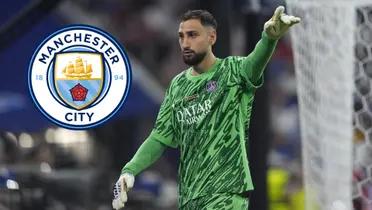How Do Tactical Changes Affect Premier League Match Outcomes and Team Performance?
Explore how tactical changes influence Premier League matches. From formation shifts to data-driven decisions.

In the ever-evolving landscape of the Premier League, tactical changes play a pivotal role in shaping team performance and determining match outcomes. Managers continually adapt their strategies to exploit opponents' weaknesses, respond to in-game developments, and maximize their squad's potential. Join us as we delve into how these tactical adjustments influence the dynamics of football matches and the overall success of teams in the Premier League.
The Impact of Tactical Formations on Team Performance
Evolution of Formations in the Premier League
Historically, the Premier League has witnessed a variety of tactical formations, each influencing team performance in distinct ways. The traditional 4-4-2 formation, once a staple, has evolved into more complex systems like 3-4-3, 4-3-3, and 3-5-2, reflecting the changing philosophies of modern football. These formations are not merely numerical representations but embody strategic approaches that affect both offensive and defensive dynamics on the field.

Case Study: The 3-4-3 Formation
The adoption of the 3-4-3 formation by several Premier League teams has showcased its impact on match outcomes. This setup provides defensive solidity with three center-backs while offering width and attacking options through wing-backs and a trio of forwards. Managers like Antonio Conte have successfully implemented this system, leading to improved defensive records and enhanced offensive fluidity. However, the effectiveness of such formations heavily depends on player adaptability and understanding of their roles within the system.
In-Game Tactical Adjustments and Their Effects
Responding to Opponent Strategies
In-game tactical changes are crucial for managers aiming to counteract opponent strategies. Adjustments such as shifting formations, altering player positions, or modifying pressing intensity can disrupt the opposition's game plan. For instance, a team facing high pressing might switch to a formation that supports longer passes, bypassing the press and exploiting spaces behind the opponent's defense. These dynamic changes require players to be tactically versatile and aware of the game's flow.
Impact on Player Performance
Tactical changes during matches can significantly influence individual player performance. Altering a player's position or role can either play to their strengths or expose weaknesses. For example, deploying a midfielder in a more advanced role might enhance offensive capabilities but could compromise defensive stability. Therefore, managers must consider the skill sets of their players when implementing tactical adjustments to ensure a positive impact on performance.
The Role of Data Analytics in Tactical Decision-Making
Leveraging Performance Metrics
The integration of data analytics into football has revolutionized tactical decision-making in the Premier League. Managers and analysts utilize performance metrics to assess both their team's and opponents' strengths and weaknesses. This data-driven approach enables the formulation of strategies tailored to exploit specific vulnerabilities, optimize player performance, and enhance overall team efficiency.
Predictive Analysis for Tactical Planning
Predictive analytics allows teams to anticipate potential scenarios and adjust tactics accordingly. By analyzing historical data and current performance trends, managers can forecast opponent behaviors and prepare countermeasures. This proactive approach facilitates informed tactical planning, reducing uncertainties and increasing the likelihood of favorable match outcomes.

Tactical Innovations and Their Influence on Match Outcomes
High-Pressing Systems
High-pressing tactics, where teams apply intense pressure high up the pitch, have become prevalent in the Premier League. This approach aims to disrupt the opponent's build-up play, forcing errors, and creating immediate scoring opportunities. While effective, it demands high physical exertion and precise coordination among players. Teams employing this tactic often see an increase in goal-scoring chances but must balance it with defensive resilience to avoid being exposed on the counter-attack.
Counter-Attacking Strategies
Counter-attacking football focuses on quick transitions from defense to attack, capitalizing on the opponent's momentary disorganization. Teams adopting this strategy often concede possession deliberately, luring opponents forward and exploiting the spaces left behind. This approach has led to notable successes, especially against possession-dominant teams, by turning defensive situations into offensive advantages swiftly.
Managerial Philosophies and Tactical Adaptability
Influence of Managerial Styles
The tactical philosophy of a manager profoundly impacts a team's performance and adaptability. Managers with a flexible approach can modify tactics based on the game's demands, enhancing their team's competitiveness. Conversely, a rigid adherence to a single system may lead to predictability, making it easier for opponents to devise counter-strategies. Therefore, managerial adaptability is crucial in navigating the tactical complexities of the Premier League.
Case Study: Claudio Ranieri's Leicester City
Claudio Ranieri's tenure at Leicester City exemplifies the impact of adaptive tactical management. During the 2015-2016 season, Ranieri implemented a compact 4-4-2 formation, emphasizing defensive solidity and swift counter-attacks. This approach capitalized on the players' strengths and led to Leicester's unprecedented Premier League title win, highlighting how tailored tactics can yield remarkable success.
More news

THE GANG IS HERE! First Argentine Stars Arrive in Buenos Aires for Final Qualifier Push!
01/09/2025

THE LAST DANCE! Lionel Messi Confirms His Final World Cup Qualifier in Argentina!
29/08/2025

TRANSFER COLLAPSES! Julio Enciso Fails Medical Exams, Returns to Brighton!
27/08/2025

Vini doesn't feel entirely comfortable at Real Madrid anymore and is seeking a future at another club
26/08/2025

HERE WE GO! Piero Hincapié Says YES to Arsenal, Club Prepares Final Bid for Leverkusen Star!
26/08/2025

THE REAL MADRID SHOWDOWN: Nico Paz's Future Sparks a Bidding War Across Europe!
25/08/2025

SOUTH AMERICAN SHAME: Independiente vs. U. de Chile Match Canceled After Horrific Incidents!
21/08/2025

Rodrygo Benched by Xabi Alonso: The End of an Era at Real Madrid?
20/08/2025

PARIS IN PARIS! The New Superclub, Paris FC, Rises to Threaten PSG-Marseille Rivalry!
20/08/2025

PSG’s €850M Budget is 30x Larger Than the Smallest in Ligue 1!
19/08/2025

THE DEBUTS ARE HERE! Estupiñán & Modrić Step Onto the San Siro Stage!
18/08/2025

CONTROVERSY IGNITES! Barcelona Opens Season with a Contested 2-0 Victory Over Mallorca!
18/08/2025

SCANDAL ESCALATES: Donnarumma's Harsh Letter Responds to Luis Enrique's Super Cup Snub!
15/08/2025

Franco Mastantuono: A New Number 30 for Real Madrid with a Nod to the Past
14/08/2025

HISTORY MADE! PSG Wins First-Ever Super Cup Title in Thrilling Penalty Shootout!
14/08/2025

Mastantuono Arrives at Valdebebas for Real Madrid Presentation
13/08/2025

ON AND OFF THE PITCH: Is Nicki Nicole the New WAG of Barcelona's Lamine Yamal?
13/08/2025

Donnarumma Bids Farewell to Paris Saint-Germain at the Peak of His Career
13/08/2025



